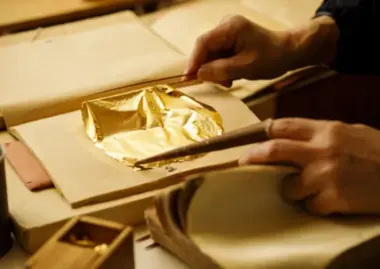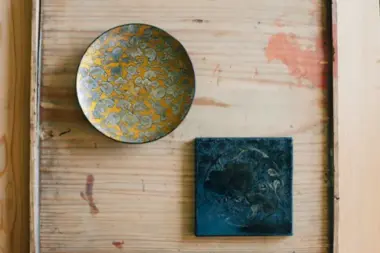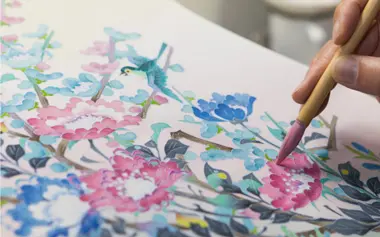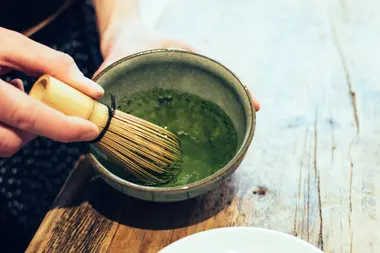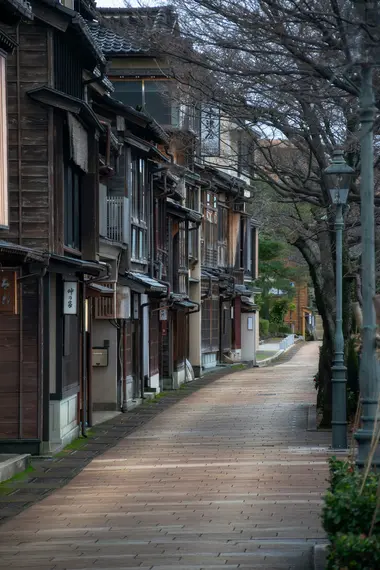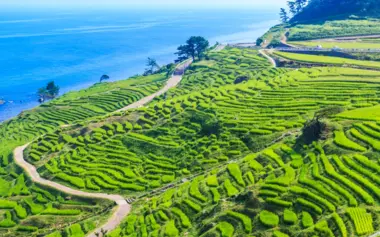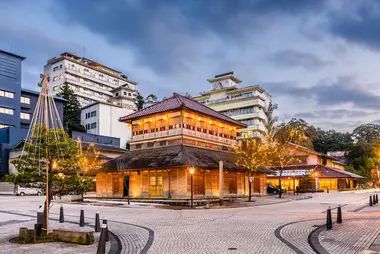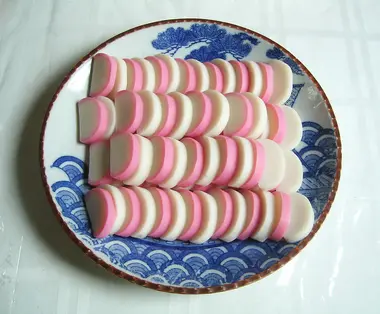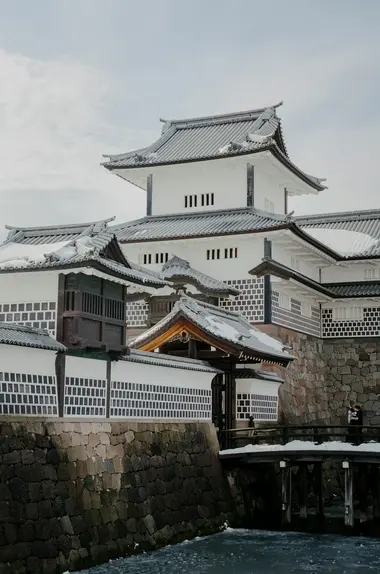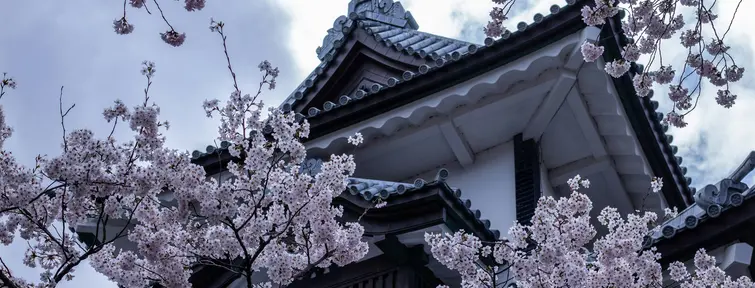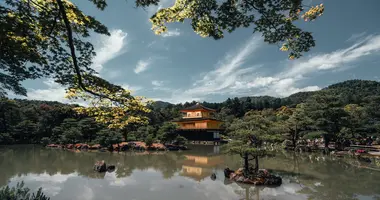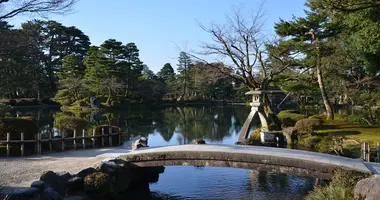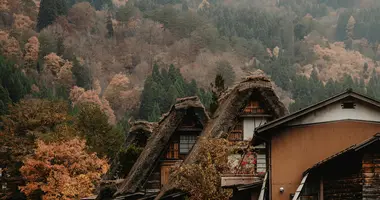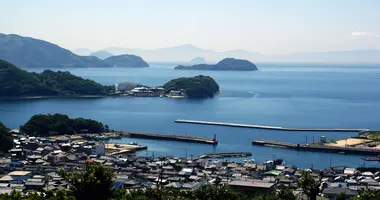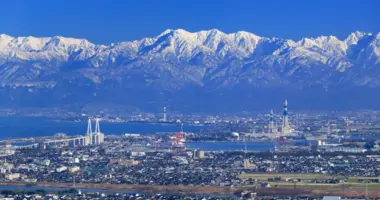Ishikawa Prefecture Travel Guide
- Published on : 02/09/2025
- by : Ph.L
- Youtube
Between mountains and sea, Ishikawa Prefecture is a gem of culture not to be missed on your trip to Japan. A land of history and culture, it is home to timeless craftsmanship and is one of Japan's top gastronomic destinations. A charming destination ready to be discovered.
Ishikawa, a land of history
Under the aegis of the Maeda clan, Ishikawa prefecture—then part of the Toyama domain—prospered during the Edo period (1603-1867). Great patrons of the arts, the lords of the clan devoted part of their resources to crafts, fine art and hospitality.
Ishikawa perpetuates this precious heritage through gold leaf work, Kutani porcelain, and the many temples and gardens that are the pride of its inhabitants.
The city of Kanazawa, capital of the prefecture, still retains traces of this glorious past, with its samurai quarter, cobbled lanes leading to geisha houses and the famous Kenroku-en garden.
Not far away, the Noto Peninsula and the Kaga and Haku-san regions offer enchanting landscapes that are an integral part of the region's heritage, where hot springs rise from snow-capped mountains and byways criss-cross lush plains.
A prefecture steeped in craftsmanship
- Gold leaf craft
Gold leaf is the base material for a gilding technique known as "cold gilding," used to "gild with leaf" certain everyday objects, such as altars and temples. Today, 99% of Japan's gold leaf production comes from Kanazawa.
Here, the Yasue Gold Leaf Museum will captivate you with the beauty of its exhibits. In the old Higashi-Chaya pleasure district, numerous stores sell products made from this ancient craft. Let yourself be tempted! Some shops offer visitors the chance to apply real gold leaf themselves to the objects they covet.
- Kutani porcelain
Renowned in Europe, Kutani porcelain is distinguished by its pieces decorated with multicolored images and glazed in bright colors. The five defining pigments of the craft (green, yellow, blue, violet and red) are used to create geometric patterns, as well as representations of birds and flowers.
In Kanazawa, you can observe the production process in some of the city's workshops. In Nomi, the Kutani Ceramic Art Village market is entirely dedicated to the local porcelain! A dozen stores and several museums present a wide range of ceramic pieces. Near Kaga, the Kutani-yaki Art Museum and the Kutani-yaki Kiln Art Museum will enable you to learn more about the techniques that have made this exceptional craft famous.
Want to try your hand at making Kutani porcelain?
Visit a workshop that has carried on the Kutani pottery tradition for five generations and see how it's made on a potter's wheel.
- Wajima lacquerware
On the Noto Peninsula, Wajima lacquer is renowned for its durability and aesthetic appeal. It is produced from urushi, an extract from the sap of the lacquer tree.
In Wajima, where you can meet master craftsmen, visitors have the opportunity to learn about this refined art. The Wajima Museum of Urushi Art boasts a remarkable collection of works to be admired without moderation. The Wajimanuri Center is dedicated to the city's creations.
- Kaga-yuzen silk
In Kanazawa, kaga-yuzen is a manual silk-dyeing technique used to produce kimonos of the highest quality. The technique is characterized by the use of five basic colors (indigo, dark green, ochre, violet and purple) and complex patterns.
In Nagamachi, the former samurai district, the Nagamachi Yuzen-Kan workshop exhibits—among other things—kimonos produced by the famous craftsman Teranishi Ikkō. Not far from the Kenroku-en garden, the venerable Kaga-yuzen Kimono House showcases its finest pieces and offers visitors the chance to dye their own handkerchiefs.
- Ohi ceramics for tea ceremony
Exclusively produced by members of the Ōhi family, this unique, hand-formed ceramic has been used for the tea ceremony since the rise of the Maeda clan in the region.
The Ōhi Museum exhibits the works of this illustrious line of ceramists, some of which are offered for sale. A teahouse here also serves matcha in real Ōhi bowls.
Kanazawa: What to see in the city of gold leaf?
Formerly the capital of the estate, Kanazawa is a lively, historic city where contemporary architecture blends with the charm of its traditional center.
- Kenroku-en garden
- Kanazawa Castle
- Nagamachi samurai district
- Higashi-chaya, the old pleasure district
- Omicho market
- 21st-century contemporary museum
Day 1
In front of Kanazawa station, the Tsuzumi-mon gate has become one of the city's most iconic symbols. As soon as you arrive, take a stroll through the Kenroku-en Garden, one of the three most beautiful gardens in Japan, famous for its changing landscapes with the seasons. A stone's throw away, visit Kanazawa Castle, former home of the Maeda lords, which elegantly dominates the city.
Step back in time: the 21st-century contemporary museum welcomes you to its bold premises. It houses temporary exhibitions by world-renowned Japanese and international artists. Its central "swimming pool" installation is filled with surprises and is one of the most interesting spots in the city.
At the end of the day, stroll through the city center. The Katamachi and Korinbo districts are ideal for shopping and dining!
Day 2
Spend the morning in the samurai district of Nagamachi. Its stone-lined alleys and historic residences will introduce you to a forgotten Japan. For lunch, head to Omicho Market. Enjoy the lively atmosphere as fishermongers cheerfully call out to passersby. End the day in the old pleasure district, where you can discover local crafts.
The Noto Peninsula: a rejuvenating stopover
With its beaches and impressive coastline, the Noto Peninsula is ideal for enjoying the great outdoors.
- The rice terraces of Shiroyome Senmaida
- The town of Wajima
- The island of Noto-jima
- Wakura Onsen
- Keta Taisha Shrine
- Okunoto salt village
Day 1
Discover the beauty of the peninsula by car. Early in the morning, visit the rice terraces of Shiroyone Senmaida, an emblematic landscape of the region, where thousands of plots of rice stretch up the hillside. Then head for Wajima, the cultural heart of the peninsula. Take a stroll through the market. Open until noon, it's one of the oldest in Japan. Before sunset, learn the secrets of Wajima lacquerware.
Day 2
Take the ferry to the island of Noto-jima. Explore its fishing villages and artisan workshops, before ending the day relaxing at the Wakura Onsen hot springs.
Day 3
Start the day with a visit to Keta Taisha Shrine, one of the region's most important sacred sites. Stop off at the salt village of Okunoko, where an ancient tradition of salt harvesting lives on.
Day 4
Stroll along the Sosogi coast. In the afternoon, explore the rocky island of Mitsukejima and the spectacular Ganmon sea cave, weather permitting.
What to see and do in the mountainous region of Haku-san and Kaga Onsen
On the shores of the Sea of Japan, southern Ishikawa is a land of mountains and hot springs. Kaga Onsen is home to four spa villages, while Mount Haku-san, which rises to an altitude of 2,700 metres, has been a place of worship since ancient times.
- Kutani
- Kaga Onsen
- Ichirino Onsen
- Haku National Park
- Netadera temple
Day 1
South of Kanazawa, Kutani is the birthplace of Kutani porcelain. Visit craftsmen's workshops and the Kutani Ceramic Art Village, an area dedicated to porcelain work. Then head for Kaga and its Kitamaebune Museum, which aptly recounts the history of Japan's ancient merchant ships. At the end of the day, stop off at Kaga Onsen. Comprising four spa villages (Yamashiro, Yamanaka, Katayamazu and Awazu), Kaga Onsen is the ideal place to experience an overnight stay in a ryokan (traditional Japanese inn) and take full advantage of the benefits of the hot springs.
Day 2
Visit Haku National Park. It offers a wide range of outdoor activities. Mount Haku itself is popular for climbing in summer. In winter, it's a delight for snow sports enthusiasts. As for the Hakusan-Shirakawa-go Route, it runs alongside waterfalls and observation platforms, much to the delight of hikers. At the end of the day, recharge your batteries at the Ichirino Onsen, located at the foot of Mount Haku-san. Weather permitting, stop off at the Netadera temple, famous for its gardens and panoramic views of the surrounding area.
Culinary delights
- Tastes from the land
Ishikawa Prefecture's geographical location makes it an ideal place to discover Japan's seafood.
Among its culinary riches are oysters, zuwaigani, a "snow crab" whose long legs are prized by gourmets, and nodoguro, known as black throat seaperch in English, which is best enjoyed grilled.
Have you ever tried kamaboko? These white fish cakes surrounded by kombu seaweed were once loaded into the holds of Kitamaebune boats and sold all over the country.
Feeling more adventurous? Try fugu, the "puffer fish" (or "porcupine fish"), whose fleshy body swells and bristles with deadly venomous spines. Rest assured, the region's chefs have a state license to prepare it.
Rich in water, Ishikawa is also rich in soil. From sweet potatoes and black radishes to lotus roots and dwarf cucumbers, the prefecture boasts a wide variety of wild vegetables. Not to mention Noto beef, appreciated for its melt-in-the-mouth texture and delicate flavor.
- Kaga-ryōri, refined family cooking
Kaga cuisine (Kaga-ryōri) is best experienced during a "kaiseki" meal, made up of numerous small, carefully prepared dishes. This atypical cuisine uses local seasonal produce, blending delicate flavors with elegant presentation in Kutani ceramic or Wajima lacquerware.
Among its signature dishes, Jibu-ni is a creamy soup, often made with marinated duck and vegetables simmered in a "dashi" broth. Once a festive dish, Jibu-ni is now a classic found in many Ishikawa homes.
Other specialties include steamed stuffed sea bream and gori, a river fish boiled or stewed.
Activities for all seasons
Hiking in spring, swimming in summer, strolling in autumn to admire the colors of the season and winter sports when temperatures drop, Ishikawa Prefecture can be enjoyed all year round.
It also lives to the rhythm of its many festivals:
- In January, the Kaga-tobi Dezomeshiki festival brings together a thousand municipal firefighters at Kanazawa Castle. Perched atop bamboo ladders, these firefighters perform an impressive display of acrobatics known as Dezomeshiki.
- In early May, the Seihakusai festival features Japan's largest wooden floats in an extraordinary parade. These 12-meter-high monsters, each weighing over 20 tons, are carried through the village of Nanao, a small fishing port.
- At the same time, the Otabi festival is in full swing in the streets of Komatsu. It offers local residents the chance to attend kabuki theater performances, in which the roles are played by children.
- Every first weekend in June, Kanazawa celebrates the Hyakuman-goku festival, in commemoration of the city's founding deed, signed in 1583 by Toshiie Maeda, the first lord of Kanazawa.
- From July to September, the Noto region hosts over 200 traditional festivals. These celebrations feature the kiriko, imposing lanterns carried by villagers on their shoulders.
- On August 22, Wajima holds the Wajima Taisai festival in honor of a deity from the island of Hegura-jima, who once a year is said to have come to Wajima to visit her lover. For the occasion, for four days, local residents carry palanquins and kiriko lanterns through the town so that the goddess may continue to watch over the region.
How to get to Ishikawa Prefecture
As the gateway to the prefecture, Kanazawa is easily accessible from most of Japan's major cities.
- Access by train
The Hokuriku Shinkansen from Tokyo takes around 2 h 30 to reach Kanazawa. From Kyoto, Osaka and Nagoya, Limited Express trains take 2-3 hours to reach Kanazawa, with a connection to the Hokuriku Shinkansen at Tsuruga, in Fukui prefecture.
- Access by bus
Day and night, buses link Kanazawa to other towns on the main island of Honshu, as well as to the tourist destinations of Shirakawa-go and Hida-Takayama.
- Access by plane
Located 40 minutes by bus from the center of Kanazawa, Komatsu Airport also handles domestic and international flights.
- Access by car
You can explore the region by car with a rental! This is an affordable solution, offering greater freedom to explore Ishikawa Prefecture at your own pace.

